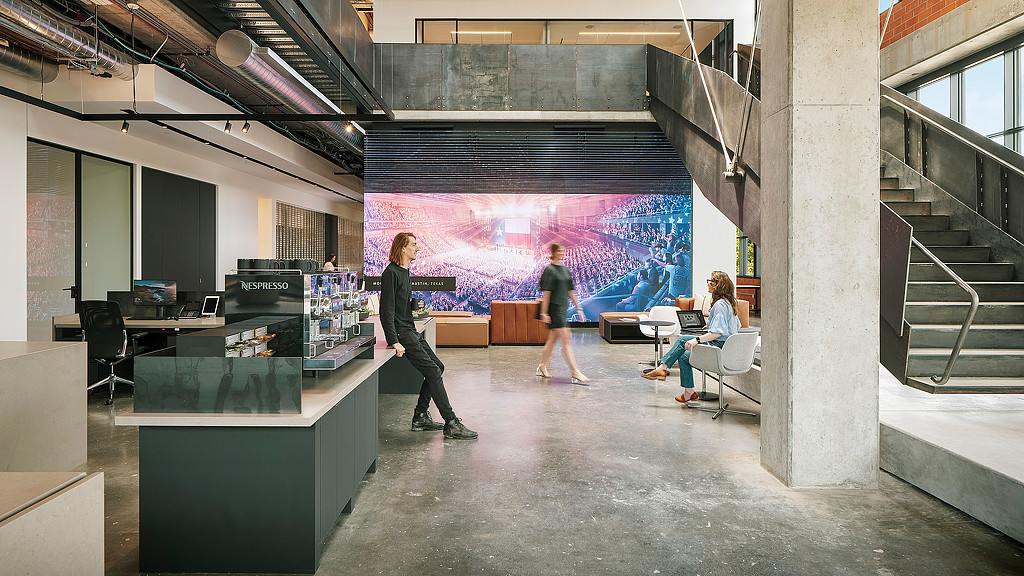How Younger Workers’ Preferences and Workstyles Will Define the Future Workplace
October 07, 2021 | By Janet Pogue McLaurin
Editor’s note: This blog is part of a series on our U.S. Workplace Survey Summer 2021 research. Read part one here, and part two here.
As organizations solidify their return to office plans, there’s one critical segment of the workforce that shouldn’t be overlooked: younger workers. Over half of the U.S. professional workforce is now below the age of 45, according to the U.S. Bureau of Labor Statistics. With Gen Z entering the workforce and Boomers retiring at a rate of 10,000 a day, the workforce is going through a fundamental shift. Add in the ‘Great Resignation’ — the idea that people are voluntarily leaving their jobs in search of better pay, more flexibility, and happiness in response to the pandemic — and it could shift even faster.
The preferences and workstyles of our younger workers will increasingly define the future of the workplace for everyone. How will this impact how we work? What does it mean for the office of the future? In Gensler’s U.S. Workplace Survey Summer 2021 research, and for the first time in our research, we uncovered some distinct generational differences for both how generations prefer to work and how they value the office differently.
Younger generations value the office differently
We asked all 2,000+ survey respondents to rank their top 10 primary purposes of the office from a long list of selections. Universally, all four generations rated the number one purpose of the office is to “collaborate with their team.” During the pandemic, Zoom and other virtual collaboration tools have been a poor substitute for simply working in-person with your team and colleagues. But that is where the similarities between generations ends. Gen Z respondents are significantly more likely to select “maximizing individual productivity,” and the only generation to rank “being visible to be promoted” in their top 10.

Younger generations view the office as a place to not only work with their teams, but also to get their individual work done. In our workplace survey last summer, we also saw young workers more likely to rank “focus on my work” higher than other generations as top reasons for going into the office. Living conditions could play a role in the ranking, as our research early in the pandemic showed that younger workers and those with kids were having more trouble avoiding distractions and maintaining a work/life balance at home. The office played an important role in being able to work alone, but together.
Gen Z was the only generation to rank “being visible to be promoted” in their top 10 list. Surprisingly, Gen Z and Millennial respondents are also the only generations to rank “inspiring creativity and innovation” as well. While Boomers value sharing knowledge and best practices, as well as accessing specific spaces, materials, or resources at the office, Gen Z are the newcomers to the workforce and often a company’s most recent hires. They are learning about the business, their employer, the norms and culture of their company, and building social connections and relationships, which are fundamental to building a long-term career. Learning by observing and participating by being in the office is crucial at this stage and the younger generations intuitively know that they need to not only be visible, but get inspired as well.
Flexibility is preferred over assigned desks
Two out of three workers would prefer to work from a desk when they’re in the office. Again, we see unique generational differences. Almost half of the Boomer respondents prefer primarily working at the office at a desk not shared by others compared to just 25% of Boomers who prefer primarily working remotely but reserving a desk when they come into the office. Younger generations prefer having flexibility to work remotely over assigned desks at the office. About 70% of Gen Z, Millennials, and Gen X respondents prefer primarily working remotely — but when they come into the office, they prefer either at a reserved desk or an on-demand work setting in common areas. About 30% prefer working in the office at a desk not shared with others. Of the four choices, team-based work settings for those with a remote work schedule was the least preferred option by Gen Z (4%) with 13% preference for Millennial, Gen X, and Boomer respondents. Team-based work settings was most prevalent in the Tech industry.
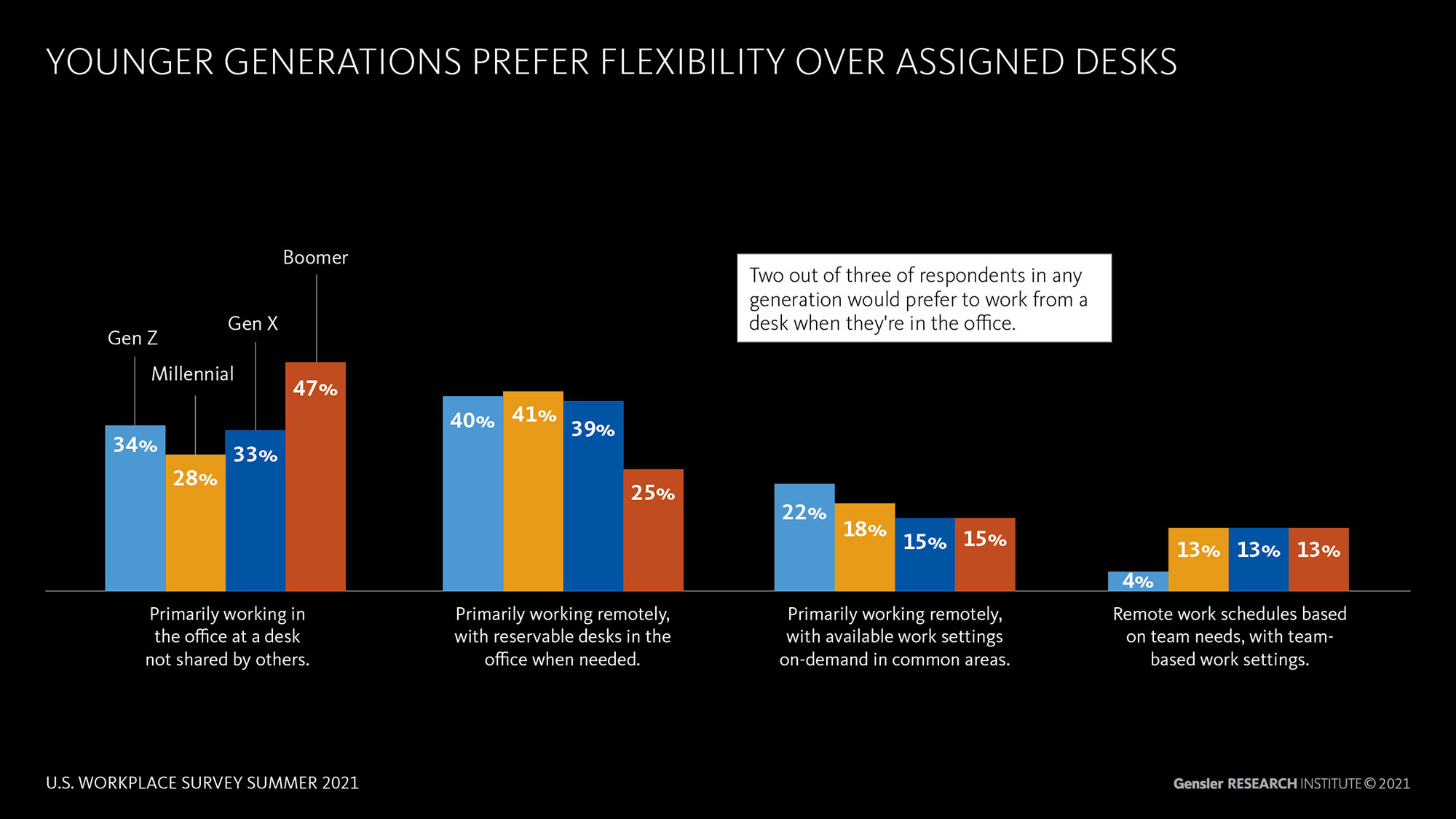
Third places are an important part of the new workplace ecosystem
As cities and workplaces open up in the future, Gen Z and Millennial workers see third places such as coffee shops, libraries, and parks as an important part of their workday and where to get their work done. While older generations tend to see work locations as binary — home or the office, the younger generations have fully embraced the concept of ‘work anywhere.’ Both third places and coworking places are increasingly preferred for a wide range of work activities. For example, younger generations prefer to think/ideate by themselves at the office, compared to Boomers who prefer to think/ideate at home. Younger generations are three times more likely to prefer third places to reflect or conceptualize than Boomers, who overwhelming prefer home.
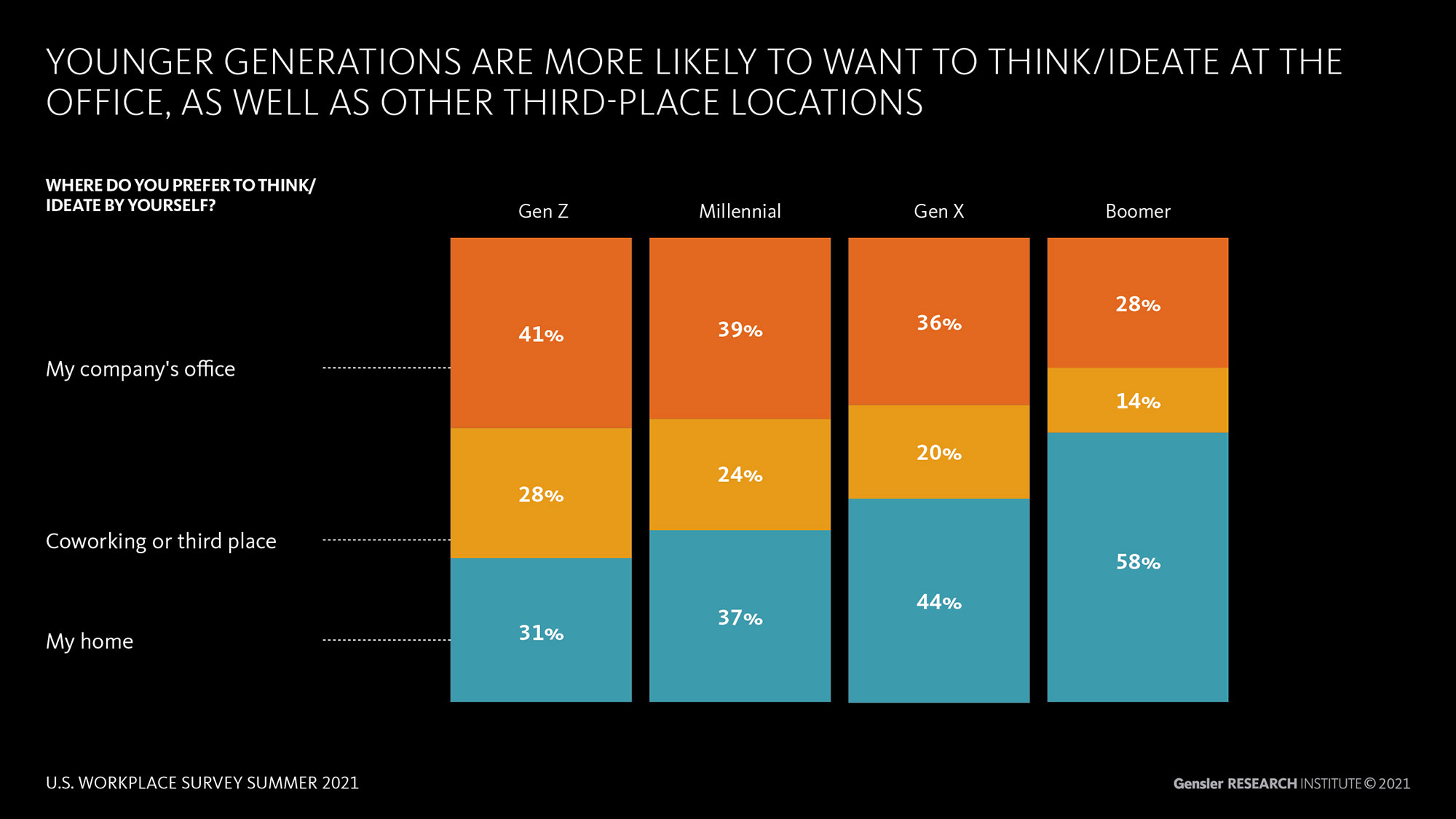
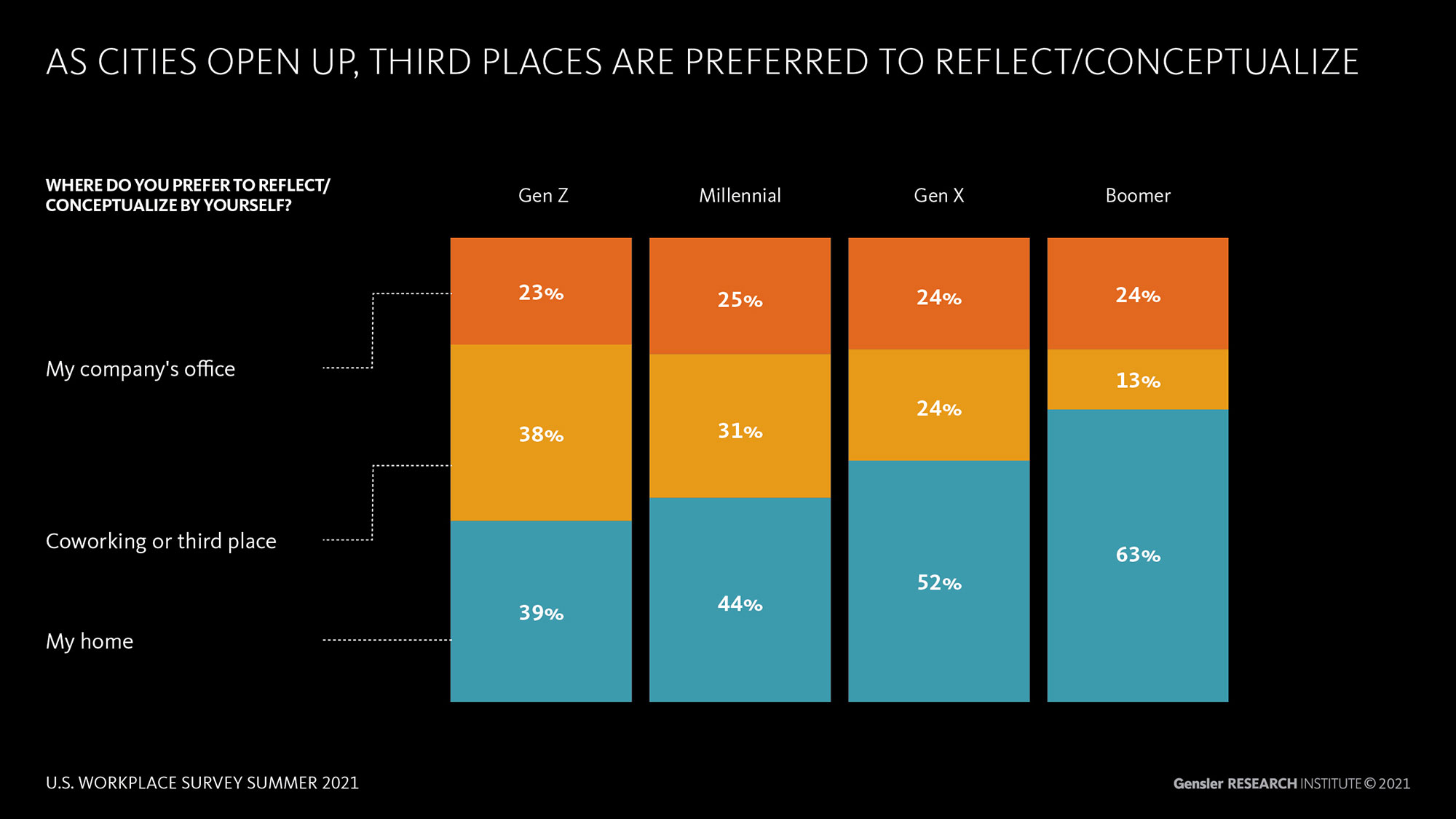
Similar to top-performers, third places are also preferred by Gen Z for in-person feedback, to connect/socialize with colleagues, and for unplanned meetings, while the preference for third places drops with age. Selecting leases that have third places nearby for employees to use or embedded into corporate campuses can provide variety and choice for top-performing companies and younger generations alike.
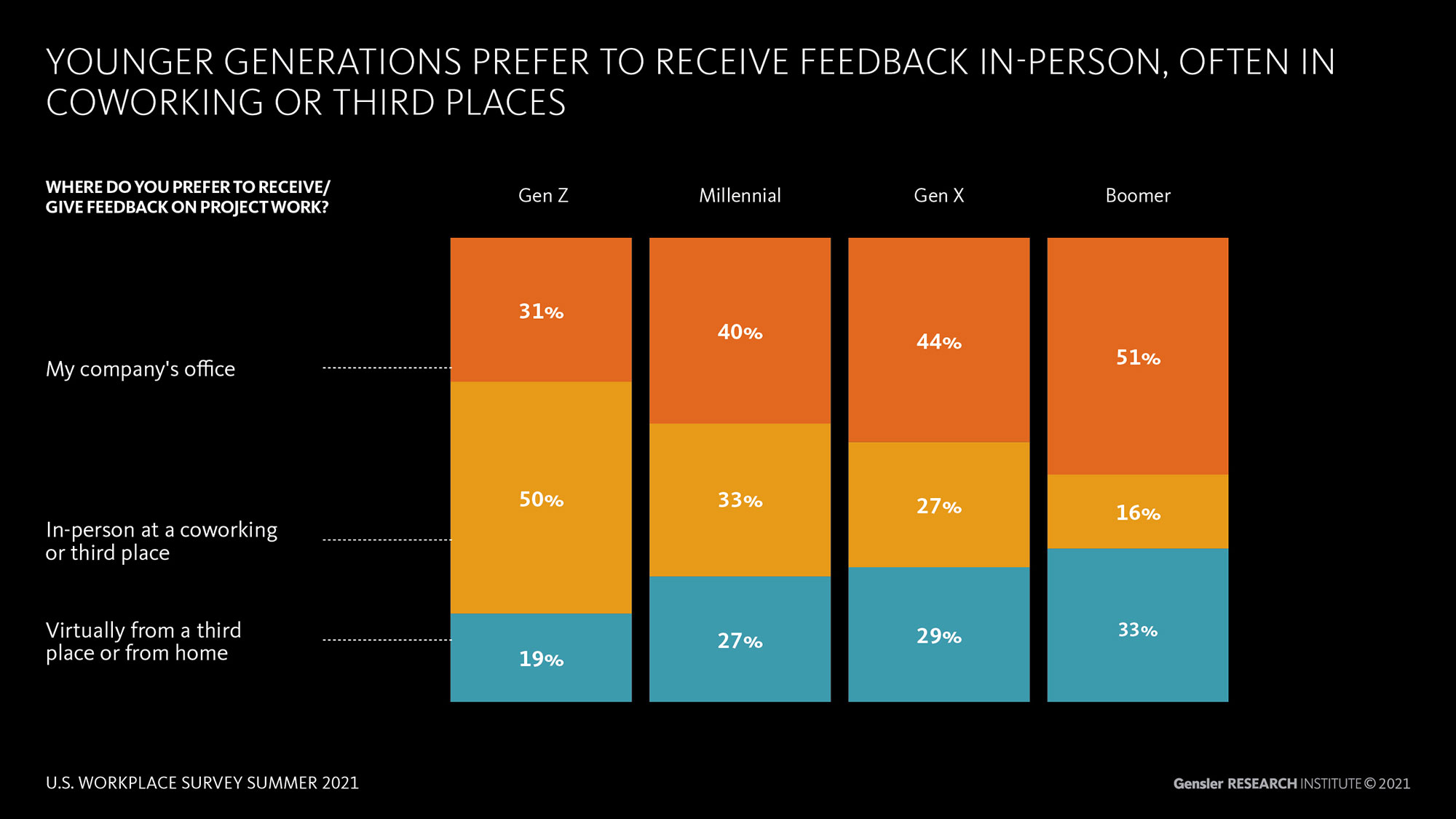
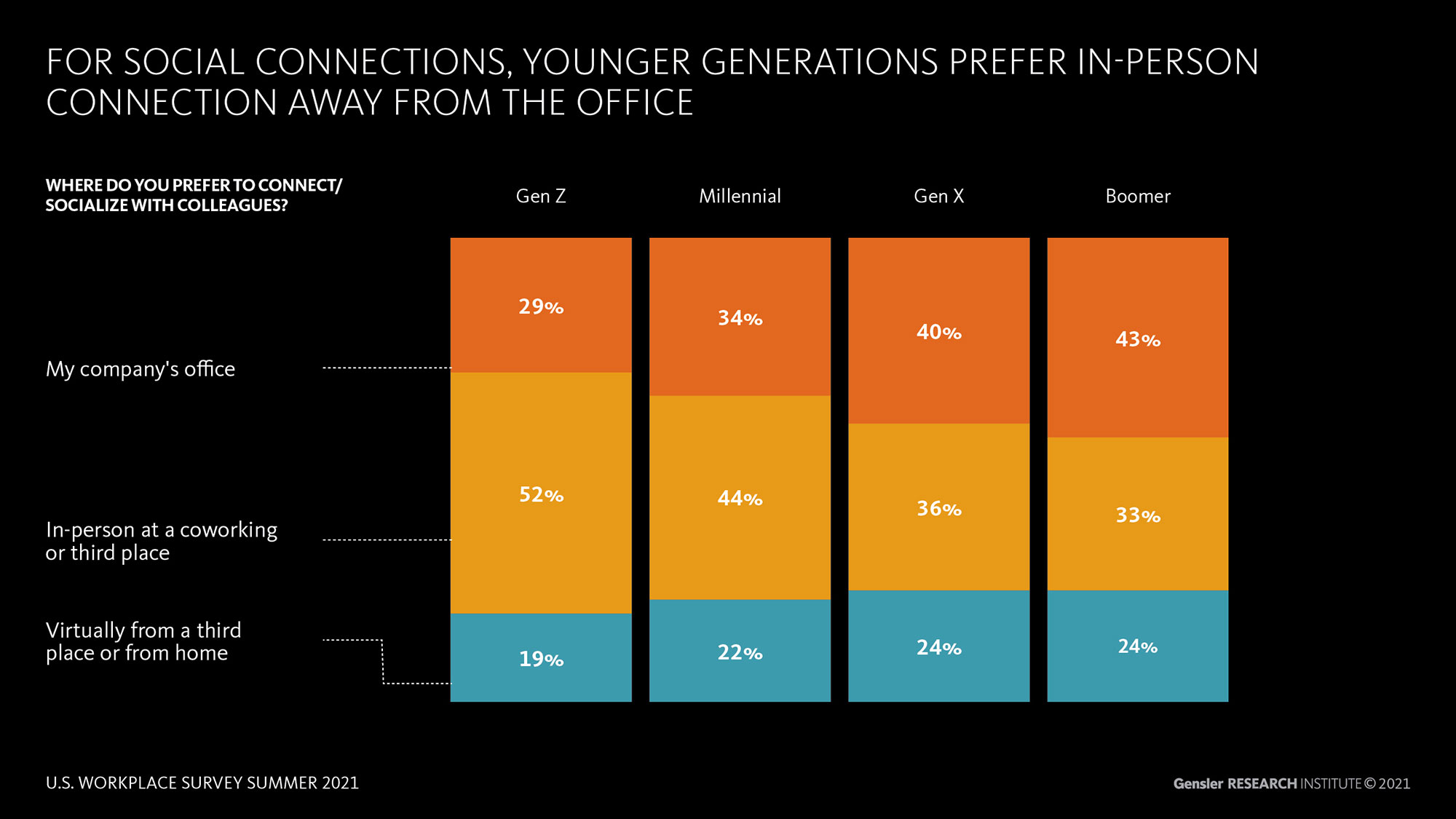
Creating an empowered work experience
For companies to compete in the current war for talent, it’s time to think beyond the workplace — to create an empowered work experience that will attract new talent and retain existing talent that is engaged, productive, and creative. This next year will be one of experimentation, piloting new ways of working, testing new ideas, and learning. There will not be a one-size-fits-all solution even across a single organization. Different functions work in different ways. And different generations not only work differently, but value different aspects of the workplace both in and out of the office. It’s time to focus on creating an empowered work experience based on choice and flexibility that is inclusive — recognizing generational differences and celebrating how we each work and what we all need to win the hearts, souls, and minds of our people.
For media inquiries, email .
